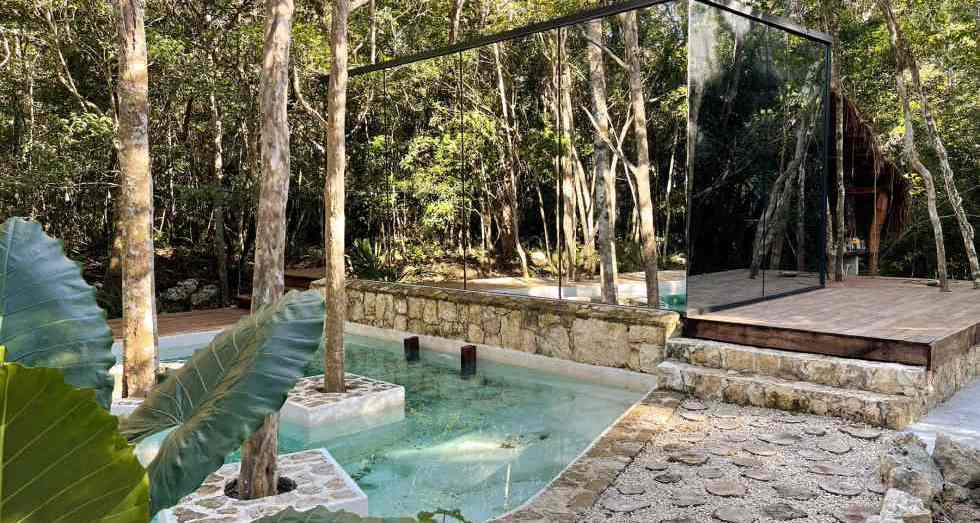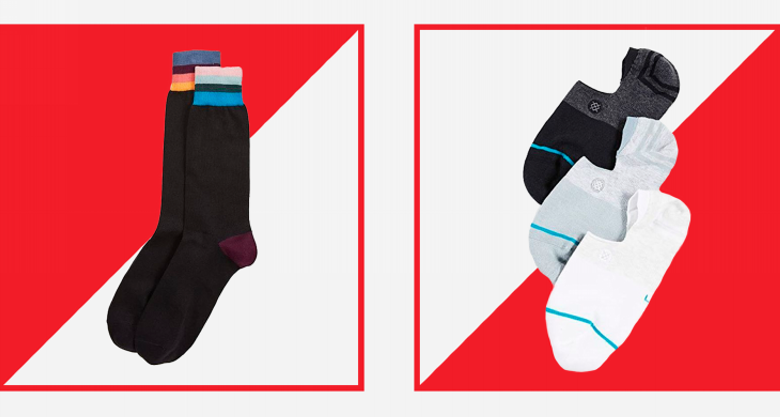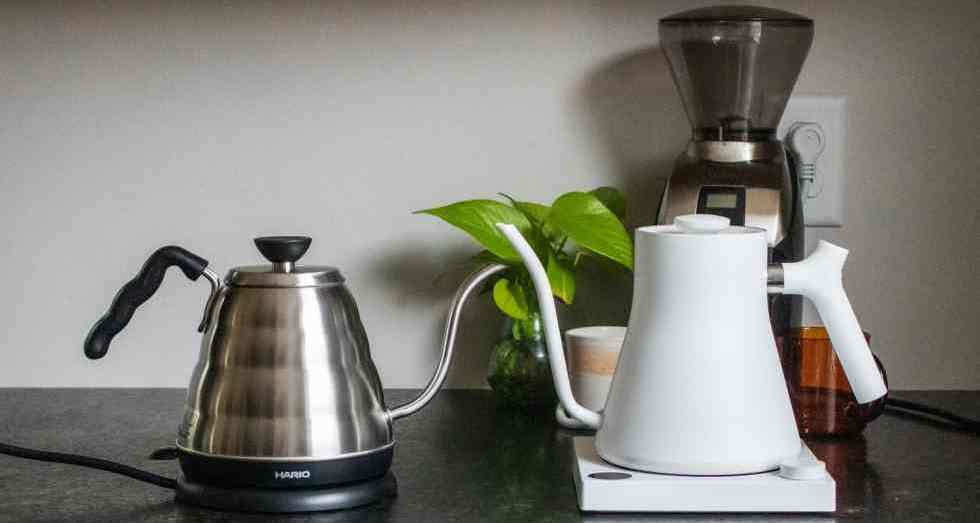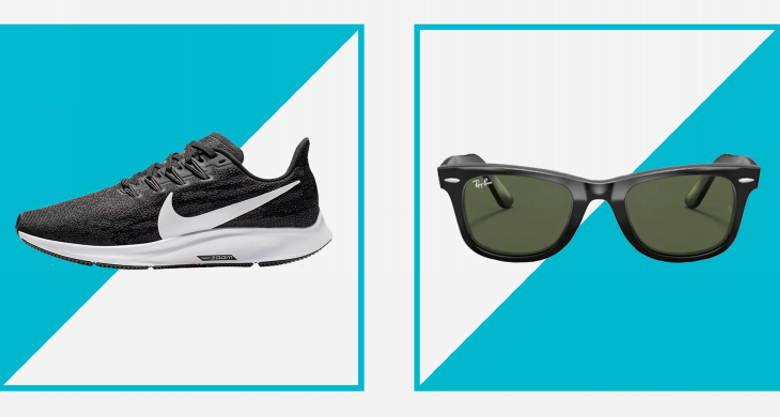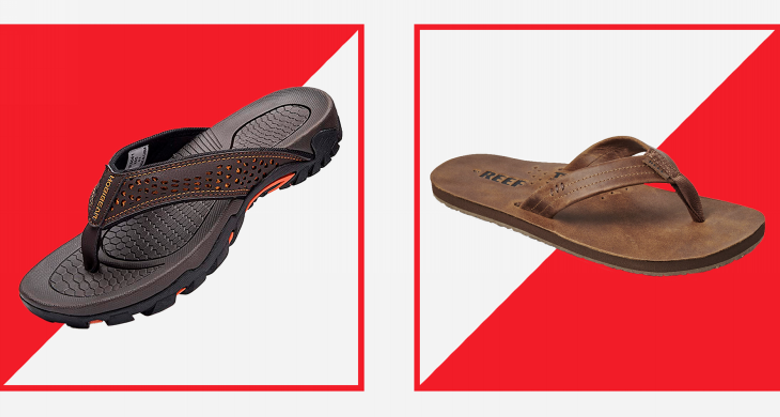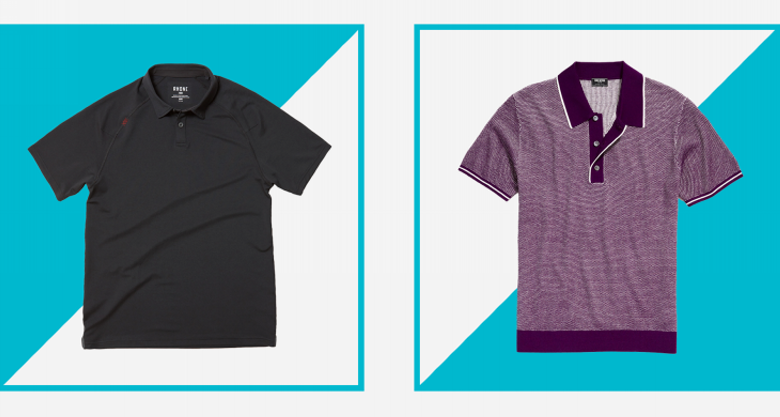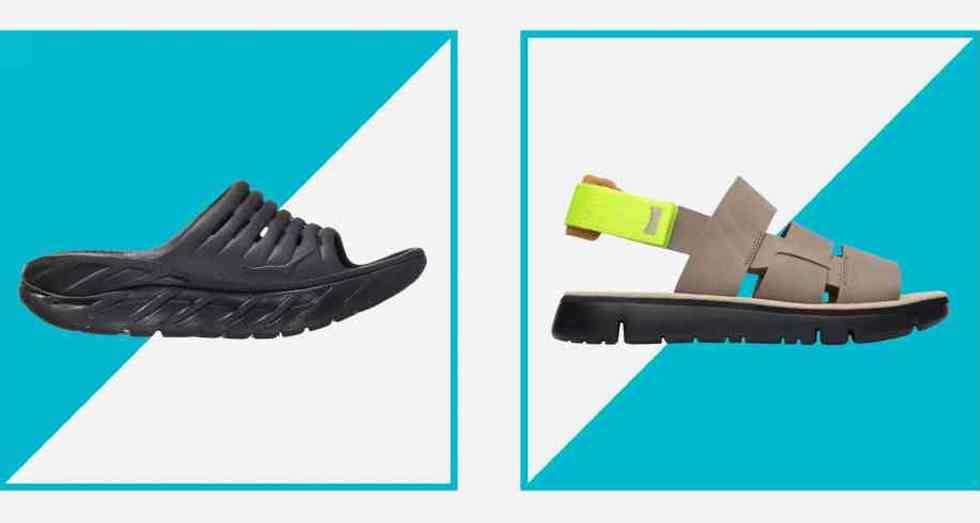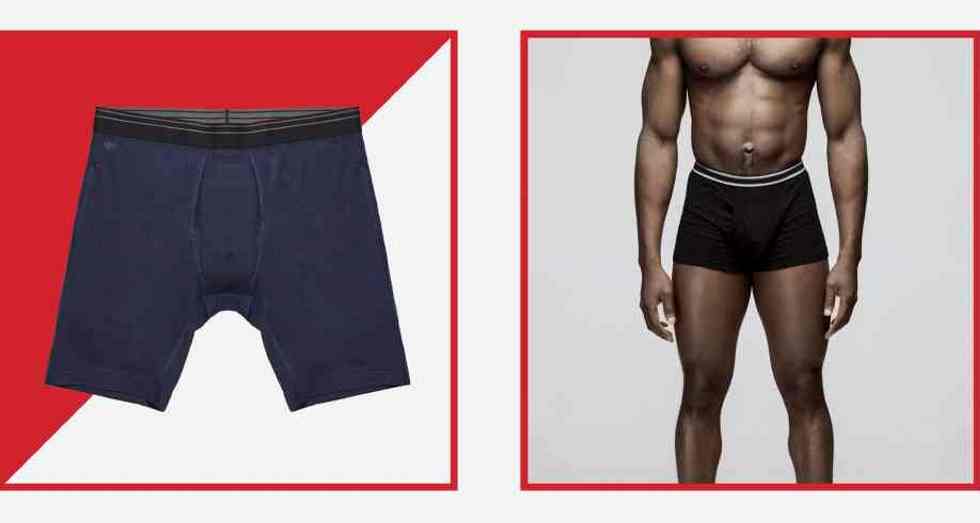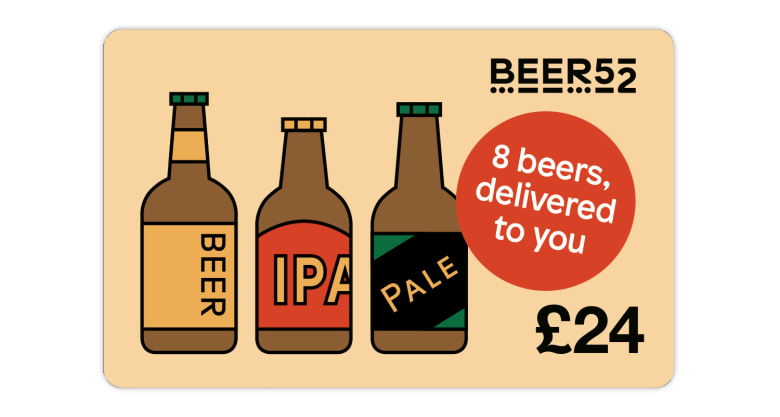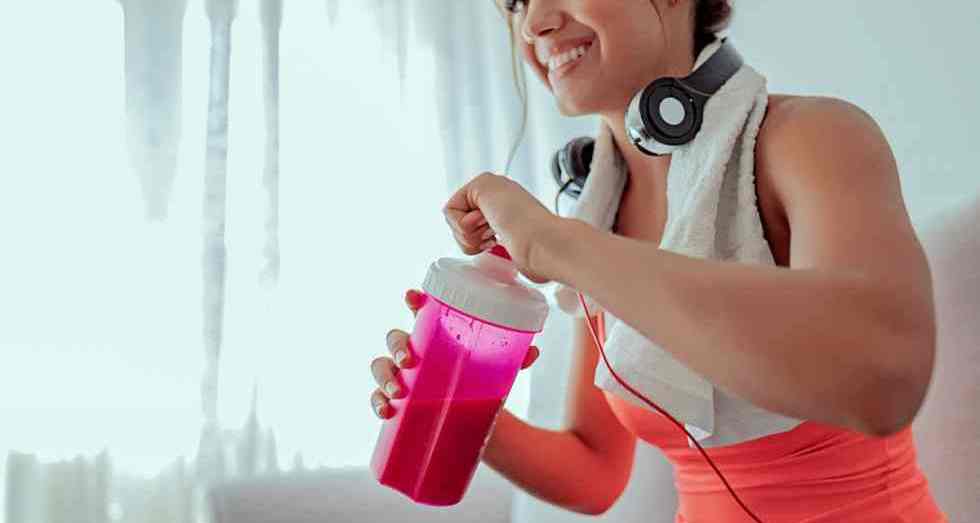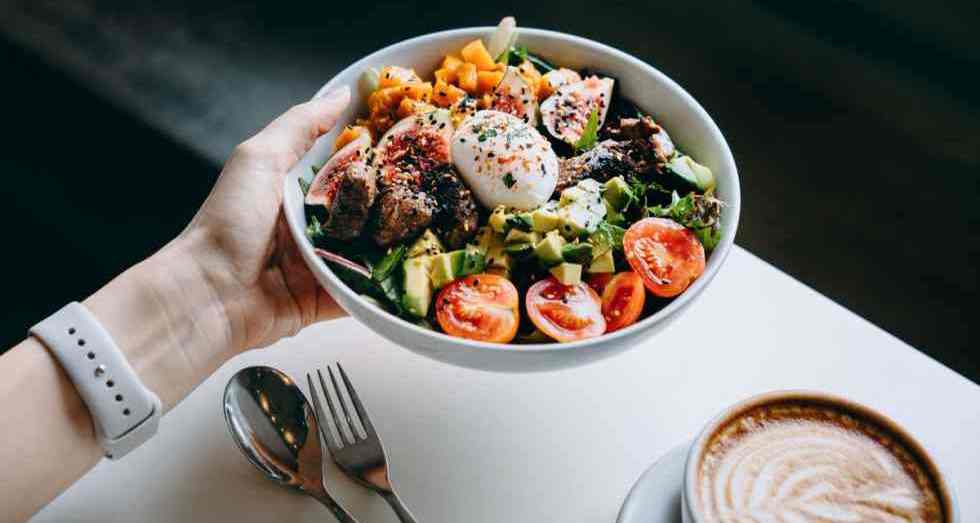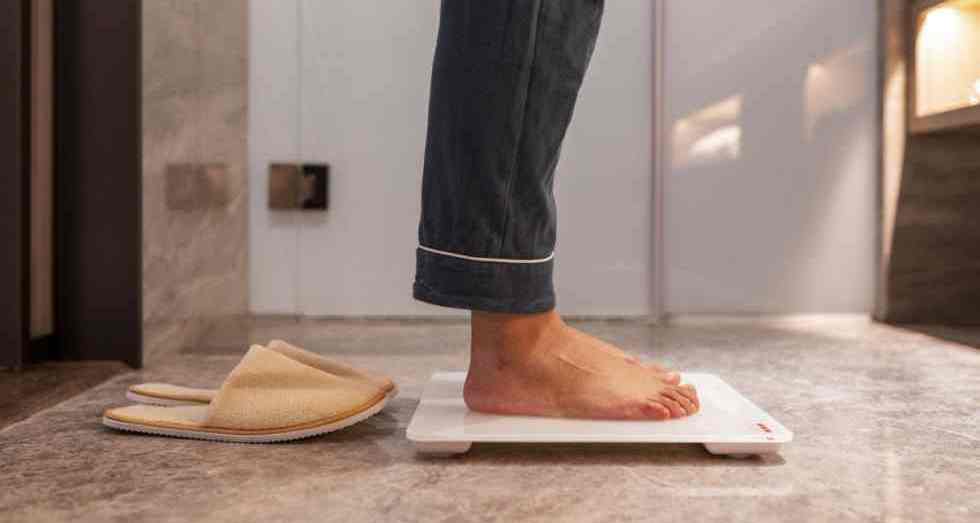Straight to the Point
Our favorite sous vide machines are the Breville Joule Sous Vide and Anova Precision Cooker. Both are fantastic, accurate immersion circulators, but the Breville is controlled by an app, while the Anova has an on-board display (depending on what you prefer). This model from Instant is another solid, more budget-friendly pick.
Over the past decade, sous vide cooking has made the jump from fine-dining restaurants to home kitchens. With it, so have the devices that make such ultra-precise, low-temperature cooking possible. Immersion circulators have gone from being expensive pieces of laboratory equipment to affordable kitchen gadgets that cost about as much as a mid-priced blender.
It's been a while since we last looked at the state of the immersion circulator market, so we felt it was time to put the latest crop of hot-tub food machines to the test.
The Winners, at a Glance
The Best Immersion Circulator: Breville Joule Sous Vide
:max_bytes(150000):strip_icc()/41Ictw0vofL._SL1000_-58a226393df78c47589cada6.jpg)
Breville Joule Sous Vide
The Joule is an impressive piece of sous vide machinery packed into a ridiculously lightweight and compact device. It has almost everything you could ask for in an at-home immersion circulator—it's accurate, it heats water quickly and quietly, and it has a sleek design with innovative features, like a magnetic base that clings securely to the bottom of many pots.
There is, however, one main drawback to the Joule: It doesn't have an onboard display and can be operated only through a secondary piece of technology, like a smartphone, tablet, or Amazon Alexa-enabled device. That said, the Joule app is intuitive, easy to use, and easy on the eyes, and it has several neat and well-considered features.
The Best Immersion Circulator With Onboard Display: Anova Precision Cooker
:max_bytes(150000):strip_icc()/__opt__aboutcom__coeus__resources__content_migration__serious_eats__static.seriouseats.com__1__dorado__live__images__anova-precision-cooker-4dcdc43b9062479fad4e25fd039fa14f.jpg)
Anova Culinary Wi-Fi Immersion Circulator
Anova's Precision Cooker is our favorite immersion circulator that features a display with onboard controls. We love being able to set up and calibrate a sous vide water bath without being forced to use our phones, especially when we're working with messy ingredients.
For those who like app integration and connected devices, fear not! The Anova Precision Cooker has a Wi-Fi- and Bluetooth-enabled model and comes with its own app featuring plenty of cooking guides and recipes (including content from a certain Kenji López-Alt). While it is bulkier than the Joule and not quite as powerful, the Anova Precision Cooker is still a quality sous vide machine.
The Best Affordable Immersion Circulator: Instant Pot Accu Slim Sous Vide Immersion Circulator
:max_bytes(150000):strip_icc()/InstantPotAccuSlimSousVidePrecisionCookerImmersionCirculator-6dff38f58bc5434a8f61f2ba069f2ef3.jpeg)
Instant Pot Accu Slim Sous Vide Precision Cooker & Immersion Circulator
After taking the multi-cooker market by storm, Instant Pot has gotten in on the immersion circulator game with the budget-friendly Accu Slim. For professional cooks who can remember a time when the only circulators on the market cost over $1,500, it’s still hard to believe that you can now purchase one for under a hundred.
Note: The model from Instant Pot we tested is no longer available. However, this newer Instant model appears to be nearly identical and has the same price point. We will be testing it and updating this review as soon as possible with our findings.
The Criteria: What We Look for in a Great Sous Vide Immersion Circulator
It's funny to think that 20 years ago, the only place you would probably have encountered immersion circulators would have been in a science lab, where they're used for tasks like incubating live cell cultures. They made the jump into restaurant kitchens in the early 2000s, during the boom years of so-called "modernist" cooking, embraced by innovative chefs like Thomas Keller, Joan Roca, and Grant Achatz. At that time, immersion circulators were still bulky pieces of lab equipment manufactured by only a handful of companies in the world and cost well over a thousand dollars.
Over the past decade, a lot has changed. Sous vide cooking exploded in popularity, and companies recognized the business opportunity in introducing immersion circulators to consumers as a new home-kitchen appliance. An arms race of sorts ensued, with companies competing to establish dominance in a new market by making devices that were increasingly affordable.
In 2009, the first circulator priced under $500 (the Sous Vide Supreme) made its debut. Today, you can choose between several machines that cost less than $100. However, that doesn't mean that all circulators are created equal.
At-home immersion circulators have settled mostly into two main pricing tiers. There's a group of higher-end models with features like apps, Wi-Fi, and voice-control connectivity. These models have list prices in the range of $160 to $200. The second tier is more affordably priced, with devices that don't offer as many bonus features but cost less than $100.
Sous Vide Cooking: How to Get Started
It's worth noting that because the immersion circulator market is so competitive, manufacturers tend to heavily discount their products during the holiday shopping season. As with many kitchen appliances, the cost is not always indicative of quality, and dropping a couple of hundred bucks doesn't necessarily mean you'll get a great sous vide device. So before you spend money on one, you should know what to look for and what to avoid.
The purpose of an immersion circulator is to heat a water bath to a precise prescribed temperature, then maintain that temperature throughout the time it takes to cook the food submerged in the bath. To do that job, an immersion circulator draws water from the bath, bringing it into contact with a heating element on the device. That water is heated by the element and spat back out into the water bath.
The heating element is turned on and off via a thermostatic control to bring the water bath up to the target temperature, then hold it at that temperature once it's reached its goal. It's important that the device effectively and constantly circulate water for even and accurate temperature control. Without that circulation, water baths develop hot spots (close to where the device is placed) and cold spots.
:max_bytes(150000):strip_icc()/__opt__aboutcom__coeus__resources__content_migration__serious_eats__seriouseats.com__2018__12__20181213-sous-vide-immersion-circulators-vicky-wasik-anova-1500x1125-f4d4d08fb2824a249bf34a656ccd23a0.jpg)
Vicky Wasik
Temperature accuracy is the defining characteristic of sous vide cooking, giving us complete control over the doneness of the food we’re cooking. Most of us are familiar with the benefits of this method of cooking—steaks cooked to a perfect medium-rare from edge to edge, Thanksgiving turkey breast that doesn’t turn to sawdust in your mouth, and so on. Immersion circulators that aren’t accurate are pretty useless.
With that in mind, the two main features we look for in a sous vide circulator are the ability to quickly heat water to a precise temperature and the ability to then maintain that temperature over an extended period of time.
On top of these basic necessities, we want immersion circulators that have intuitive controls with a user-friendly interface, that can easily be secured to a number of different vessels, that operate quietly, and that don't take up a lot of room. The immersion circulator market has become increasingly saturated, with new devices seemingly popping up all the time, while other sous vide start-ups get muscled out and are forced to take their products out of circulation.
We tested 10 circulators currently on the retail market, and here's what we found.
The Testing
Before running any performance tests, we looked over each immersion circulator to assess the overall design and functionality. It can be hard to judge design features and quality of construction from product photos and user reviews on Amazon. There are a number of immersion circulators available for purchase with truly terrible designs. We eliminated the worst of those models, as setting them up in a water bath was a frustrating experience.
The models that didn’t make us pull our hair out before we got started were put through a series of tests designed to determine their heating ability, temperature accuracy, vessel versatility, and cooking performance. We tested how long each circulator took to bring a gallon of cold water to a relatively high heat, 190 F (88 C). We then tested cooking performance by cooking chicken breasts and soft-poached eggs. We also tested versatility by attempting to secure the circulators to a number of different water-bath vessels.
Throughout testing, we took notes on ease of setup and operation, timer functions, how loud the circulators were during use, the distance between minimum and maximum water levels, any paired apps, and connectivity features.
:max_bytes(150000):strip_icc()/__opt__aboutcom__coeus__resources__content_migration__serious_eats__seriouseats.com__2018__12__20181213-sous-vide-immersion-circulators-vicky-wasik-joule-app2-1500x1125-9a3da9dfa7364d1c95217004c4550021.jpg)
Vicky Wasik
Test 1: Heating a Water Bath
We started by testing how long each circulator took to bring a gallon of cold water—57 F (14 C)—to the temperature commonly used for cooking vegetables sous vide: 190 F (88 C). Once the circulators brought the water up to the target temperature (not all of them could do this), we held them at that temperature for one hour to judge temperature-holding ability.
The water baths were set up in six-quart plastic Cambro containers. Each bath was fitted with a ThermoWorks thermocouple wire that measured and recorded temperature readings every five seconds, relaying the data to a ThermoWorks ThermaQ Blue tracker. We double-checked temperature readings throughout the testing using a ThermoWorks Thermapen and compared our readings with the temperature readings given by the circulators.
The top-performing circulator in the group, the ChefSteps Joule, blew away the competition on heating speed; it reached the target temperature in 30 minutes. The runner-up, the Anova Precision Cooker, took nearly twice as long to reach 190 F, clocking in at 56 minutes.
Some circulators never were able to reach and hold the target temperature. Others gave inaccurate temperatures, with display readings claiming that the water baths were at the prescribed temperature even though, in reality, they hovered a couple of degrees below or above it. All of the circulators that we tested claimed temperature variance of less than 1 F (0.55 C).
While a difference of two degrees isn’t always going to mean a ruined meal, sous vide cooking is all about accuracy and precision, so any device that fails at this isn’t worth the money. The models that gave significantly inaccurate readings were eliminated from the running but should be considered for the You Had One Job meme.
Some models had such weak motors that it was hard to tell if they were running, and they weren't able to effectively circulate even a gallon of water. On the other end of the spectrum, a couple of circulators made an annoying amount of noise during operation and were consequently removed from consideration.
:max_bytes(150000):strip_icc()/__opt__aboutcom__coeus__resources__content_migration__serious_eats__seriouseats.com__2018__12__20181213-sous-vide-immersion-circulators-vicky-wasik-instant-pot-in-water-1500x1125-9798434213c14ab9bf6e00056d706154.jpg)
Vicky Wasik
Test 2: Cooking Chicken Breasts
We were surprised by how many of the immersion circulators in the testing lineup were unable to perform well enough to make it to the second round of testing—only four of the 10 devices made the cut. Of these four, two (the ChefSteps Joule and the Anova Precision Cooker) were from the higher-priced tier, while the other two (the Anova Nano and the Instant Pot Accu Slim) were from the more affordable price group.
For the second round of testing, we used each machine to cook boneless, skinless chicken breasts at 150 F (65.5 C) for one hour. As in the first round of testing, we set up one-gallon water baths (this time using room-temperature water) in Cambro containers and used temperature probes to track how fast the circulators heated the water to the chosen temperature.
Again, the Joule was the fastest of the lot, reaching the target temperature in just under 15 minutes (14 minutes 58 seconds). This isn't surprising: Despite being the smallest circulator in the group, the Joule draws the most power (1,100 watts) of the four machines. What was surprising was that the Accu Slim was second fastest in the group (21 minutes 16 seconds), even though it draws less power (800 watts) and is significantly cheaper than the Anova Precision Cooker, which draws 900 watts.
Contradicting its name, the Anova Precision Cooker struggled during this round of testing to reach and hold a truly accurate prescribed temperature. Before adding the chicken breasts to each water bath, we recorded temperature variance for each machine by running them for an hour once the machines indicated that they had reached the target of 150 F. The Anova Precision Cooker never hit that temp right on the money and had a temperature variance of 0.3 F.
This is a very small margin of error and not a deal-breaker by any means. Still, we feel that it is worth noting. The Nano—the smaller and more affordable circulator made by Anova—had an even higher degree of temperature variance. It heated the water almost a full degree higher than the target temperature. The Nano was also the slowest to heat water, and the placement of its fixed clamp made it so that the gallon of water in the Cambro vessel barely came above its minimum-fill line.
:max_bytes(150000):strip_icc()/__opt__aboutcom__coeus__resources__content_migration__serious_eats__seriouseats.com__2018__12__20181213-sous-vide-immersion-circulators-vicky-wasik-anova-nano-1500x1125-e2a6265bef26435b8e6c852897c53995.jpg)
Vicky Wasik
For this test, we also wanted to consider the user experience of each machine, so we used the timer function on each device when we set up the water baths. The Joule must be operated through its app, and while we don't love having to use our smartphones in the kitchen, it is very well designed. Setting the temperature and a timer with it is intuitive. If you enable notifications on your phone, you'll get pinged when your water bath has come up to temp. The app will also prompt you to start the timer once you're ready and the food is submerged in the bath.
:max_bytes(150000):strip_icc()/__opt__aboutcom__coeus__resources__content_migration__serious_eats__seriouseats.com__2018__12__20181213-sous-vide-immersion-circulators-vicky-wasik-anova-display-1500x1125-ad0e16ff86614ce6bfb20dfbd8e75298.jpg)
Vicky Wasik
Both Anova circulators can be operated either with a smart-device app or by using their onboard controls. This is the main advantage that Anova has over the Joule. We tested both methods of control, using the onboard controls to set the temperature and timer on the Nano and the app to control the Precision Cooker.
The Anova app isn't quite as pretty to look at or as intuitive to use as the Joule app, but it still works very well. One small complaint: The Anova timer can be set only in five-minute increments.
In most cases, this won't affect your cooking. After all, as people love to point out, with sous vide cooking, it's almost impossible to overcook food (which is not completely true). But there are some foods, like eggs, that are very time- and temperature-sensitive, and it's nice to be able to set a timer for 12 minutes if you want to. Again, these machines make their name on being exacting; it seems like their timer increments should be a part of that.
:max_bytes(150000):strip_icc()/__opt__aboutcom__coeus__resources__content_migration__serious_eats__seriouseats.com__2018__12__20181213-sous-vide-immersion-circulators-vicky-wasik-instapot-display-1500x1125-b5a9770f62f44d36b6eccbf72ddf2064.jpg)
Vicky Wasik
A more frustrating and significant complaint regarding onboard timers can be levied at both Anova and the Instant Pot Accu Slim. Knowing that we would be cooking chicken breasts for one hour at 150 F, we set timers on both the Nano and the Accu Slim when we initially set up and started heating their water baths. Both timers began counting down as soon as their respective water baths came up to temp, even though we hadn't added chicken to the baths yet or pressed any button indicating that we wanted to start the countdown.
It seems silly to expect people to be waiting by their circulators, poised to drop their sous vide bags into the water exactly at the moment the bath is at the right temperature. Neither machine gave much of an audible notice that the water bath was ready or that the timer had begun counting down. (The Accu Slim beeped softly three times, while the Nano beeped twice.) Yes, you can wait until you've dropped your food into the bath to set a timer on these machines. But this seems to be a glaring design flaw.
Even worse, both machines automatically shut off operation when the timers ended. This is frustrating and also potentially dangerous since unattended foods could sit in the temperature "danger zone" for bacterial growth. (As much as too much time spent at the cooking temperature can make a difference in sous vide cooking, too much time spent in a bacterial wonderland is even worse.)
:max_bytes(150000):strip_icc()/__opt__aboutcom__coeus__resources__content_migration__serious_eats__seriouseats.com__2018__12__20181213-sous-vide-immersion-circulators-vicky-wasik-15-joule-app-1500x1125-c92fb34d87294d37b3bcbd96cc86e68b.jpg)
Vicky Wasik
In comparison, when a timer finishes counting down on the Joule app, the circulator keeps running and the timer begins counting up, indicating how long the Joule has been holding the food at the target temperature since the countdown ended. This is a much better system, but it's not perfect. You're relying on an app, so if that app—or your phone—crashes, you're in trouble. (This also applies to the Anova app.) The Joule device won't shut itself off if the app crashes; it will continue running, but you can lose your timer countdown.
Also, because these apps rely on a Wi-Fi or Bluetooth connection, you can run into problems if those connections are interrupted. Both Daniel and I have used the Joule a fair amount. We've both experienced incidents when our devices have lost their Wi-Fi connections, causing the machines to abruptly stop operation and go into standby mode, and ruining the food in the process.
To be fair, ChefSteps has a good track record of updating and improving its app, and the company is constantly working to fix connectivity issues. Side note: You can connect the Joule to a Wi-Fi network only if you are the registered owner of that Joule device; otherwise, you can connect only via Bluetooth. We found that slightly annoying.
Long story short: We prefer using a separate, independent timer to keep track of what we're cooking, rather than relying on the timer functions offered by the circulators.
As for cooking performance, all four machines cooked the chicken breasts evenly to the desired degree of doneness. No complaints there.
Test 3: Cooking Eggs
Eggs are notoriously the most time- and temperature-sensitive food that gets cooked sous vide. Chicken breasts cooked sous vide will taste the same if they're cooked for one hour or two hours. This is not the case with the chicken breasts' precursors, eggs. Time and temperature can significantly change the final texture of an egg cooked sous vide. So we chose to cook soft-poached eggs to further test the accuracy and temperature recovery speed of our top four candidates.
We set up water baths the same way as in the prior two tests, set the target temperature to 167 F (75 C), and cooked the eggs for exactly 12 minutes. This yields soft-poached eggs in a much shorter amount of time than the famous "63-degree [Celsius] egg" that put sous vide eggs on the map. At 167 F, the shorter cooking time and sensitive ingredient make temperature recovery time—the amount of time it takes for a circulator to get back up to its target temp after cooler food has been added to the bath—more important.
Again, the Joule came out as the top performer, dropping less than one degree when we added six cold eggs to the bath and recovering to the target temperature in less than a minute. The Anova Precision Cooker dropped two degrees and took four minutes to recover. The Accu Slim dropped three degrees but was able to recover in two minutes. The Nano performed the worst, running a full degree higher than the target temperature; it hit 167 F only momentarily during the recovery window, before going back to an undesirable 168 F (75.5 C). All four circulators yielded acceptable results, but the yolks of the eggs cooked using the Nano were slightly more set and fudgy.
The final straw for the Nano came when we tried setting up water baths using different vessels, an important consideration given the variety of pots and containers found in home kitchens. Home cooks will be setting up their immersion circulators in any number of vessel types and sizes depending on what they own, and the circulator should therefore work with the widest number of possibilities.
Besides the Cambro containers we used during testing, we also tried to secure the circulators to a five-and-a-half-quart Dutch oven and a 2-quart stockpot. The Joule and Anova Precision Cooker were the easiest to secure. Joule’s ingenious magnetic base makes it a breeze to set up, while the adjustable clamp on the Anova Precision Cooker is sturdy and provides versatility.
Both the Accu Slim and the Nano have fixed clamps that are designed to be fitted to the side of a vessel. However, the placement of these clamps makes the Accu Slim much easier to set up than the Nano, which can't clamp onto a Dutch oven—the clamp is situated too high up on the device and can't reach the sides of the Dutch oven. Plus, because the base of the circulator is curved, it can't stand up on its own at the bottom of a pot. This means that you have to affix it to a larger vessel, then fill that vessel with more water than you would for either of the other three circulators due to the positioning of its clamp in relation to its minimum and maximum fill lines.
As we discovered during testing, the Nano is also the slowest and most inaccurate at heating water of the four finalists. Having to use more water to operate it makes it all the more frustrating. For these reasons, we eliminated the Nano from contention.
How We Chose Our Winners
We picked our winners first and foremost based on their ability to accurately heat and circulate water at a range of temperatures. We also chose our favorites according to how easy they are to set up and operate, their size (smaller is better, as long as performance isn't compromised), how quietly they run, and how easy it is to affix them to a number of different water-bath vessels. We also took price into consideration.
The Best Immersion Circulator: Breville Joule
:max_bytes(150000):strip_icc()/41Ictw0vofL._SL1000_-58a226393df78c47589cada6.jpg)
Breville Joule Sous Vide
What we liked: The Joule was the top-performing immersion circulator in every round of testing and a very pretty piece of machinery. It's incredibly compact, small enough to be stored in a kitchen drawer. Even though it has the smallest footprint of any of the circulators we tested, it's also one of the most powerful at-home sous vide devices on the market. The Joule heats water quickly, and its temperature control is accurate and precise. (In all of our testing, the Joule deviated a maximum of 0.5 F, and mostly stayed within 0.2 F of the target temperature.)
Its magnetic base is a game-changer, allowing you to stand it up in a pot (provided that the pot is made of a ferromagnetic material, like stainless steel or enameled cast iron) without having to clamp it to the side. The Joule's impeller system, which sucks up water through the bottom of the unit and spits it out through a small outlet on its side, means that you need only a couple of inches of water to run the circulator; all other circulators require significantly more water to operate. That gives Joule the largest distance between the minimum and maximum fill lines. It also runs very quietly.
The Joule app is impressively well designed and easy to use, with a ton of thoughtful features. For example, when we set the Joule to the low temperature of 97 F (36 C) to culture crème fraîche, the app asked us if we were sure we meant Fahrenheit rather than Celsius—as well as recipes and cooking guides. If you’re into bossing machines around, you can now control Joule through Amazon Alexa-enabled devices. You can also control multiple Joules with one smartphone, a feature that was not yet available when Kenji first wrote about the Joule.
For testing, we used the stainless steel–accented Joule model. Breville also makes an all-white, polycarbonate version, which is slightly cheaper and works just as well (that’s the model I have at home).
:max_bytes(150000):strip_icc()/__opt__aboutcom__coeus__resources__content_migration__serious_eats__seriouseats.com__2018__12__20181213-sous-vide-immersion-circulators-vicky-wasik-joule-features-1500x1125-d9da99faeea84680a40777b08a08a24a.jpg)
Vicky Wasik
What we didn't like: The glaring issue with the Joule is its lack of onboard display and controls. This helps contribute to the device's small size. It also means that you have to use a second piece of technology to operate it. We really don't like having to fiddle around with our phones while cooking. Phones can die or go missing, kids use your tablet to play games (and good luck getting them to give it up when you're cooking dinner), Wi-Fi cuts out, Bluetooth isn't totally reliable—you get the gist.
The other issue with the Joule is the standard clip that ships with it. It’s narrow, making it hard to clip to vessels with thicker sides. You can fix this problem by purchasing the Big Clamp accessory, but having to shell out for add-ons isn’t ideal.
:max_bytes(150000):strip_icc()/__opt__aboutcom__coeus__resources__content_migration__serious_eats__seriouseats.com__2018__12__20181213-sous-vide-immersion-circulators-vicky-wasik-joule-silo-1500x1125-d7c8cb50b8e64d69b04f361ccba6f29c.jpg)
Vicky Wasik
The Best Immersion Circulator With Onboard Display: Anova Precision Cooker
:max_bytes(150000):strip_icc()/__opt__aboutcom__coeus__resources__content_migration__serious_eats__static.seriouseats.com__1__dorado__live__images__anova-precision-cooker-4dcdc43b9062479fad4e25fd039fa14f.jpg)
Anova Culinary Wi-Fi Immersion Circulator
What we liked: The Anova Precision Cooker has an onboard display that allows you to operate it without having to use an app, meaning you can be up and running in seconds. It's really nice not having to rely on another device to operate your sous vide cooker. Still, if you like using integrated technology, the Anova can be connected via Wi-Fi or Bluetooth. It also comes with a paired app that works well and features plenty of recipes and cooking guides.
The Precision Cooker has accurate temperature control and operates quietly. It also has an adjustable clamp that makes it easy to fit to a number of vessels.
What we didn't like: The Precision Cooker is bigger and bulkier than the Joule. It is also slower to heat a water bath. The Anova's timer function works only in five-minute increments, and it's not intuitive to set a timer using the onboard display. It has a slower temperature recovery time than the Joule and is also not quite as accurate.
:max_bytes(150000):strip_icc()/__opt__aboutcom__coeus__resources__content_migration__serious_eats__seriouseats.com__2018__12__20181213-sous-vide-immersion-circulators-vicky-wasik-anova-silo-1-1500x1125-57b0775e77dc442fb4623b65910c12f0.jpg)
Vicky Wasik
The Best Affordable Immersion Circulator: Instant Pot Accu Slim
:max_bytes(150000):strip_icc()/InstantPotAccuSlimSousVidePrecisionCookerImmersionCirculator-6dff38f58bc5434a8f61f2ba069f2ef3.jpeg)
Instant Pot Accu Slim Sous Vide Precision Cooker & Immersion Circulator
What we liked: The Accu Slim is a no-frills immersion circulator that punches above its weight. It heats water faster than more powerful and expensive models, and its temperature control is accurate and reliable. The lack of bells and whistles is a welcome change and makes it easy to set up and operate.
Despite being fixed, the clamp fits to plenty of vessels and is designed to secure to one that many home cooks already have: the inner pot of an Instant Pot. It’s easily the best affordable circulator that we tested, and it’s pretty incredible that you can now purchase a very solid immersion circulator for less than $100.
What we didn't like: The timer function is poorly designed. If you set a timer when you first turn on the machine, it will begin counting down as soon as the water bath reaches its target temperature, whether your food is in the water or not. Then the machine will turn itself off as soon as the timer ends, whether you're there to remove it or not.
Because the clamp is fixed rather than adjustable, it can't be secured to every vessel. The Accu Slim also does not come with any detailed cooking guides or recipes. Although, if Instant Pot's robust online user resources for its multi-cooker are any indication, this may improve with time.
Note: The model from Instant Pot we tested is no longer available. However, this newer Instant model appears to be nearly identical and has the same price point. We will be testing it and updating this review as soon as possible with our findings.
:max_bytes(150000):strip_icc()/__opt__aboutcom__coeus__resources__content_migration__serious_eats__seriouseats.com__2018__12__20181213-sous-vide-immersion-circulators-vicky-wasik-instant-pot-silo-1500x1125-a285200b25f945beadeea2d16b6d1a85.jpg)
Vicky Wasik
The Competition
Here are notes on the other models we tested for this review:
- Anova Culinary Sous Vide Precision Cooker Nano: This was our runner-up in the category of affordable immersion circulators, but its frustrating clamp design and sluggishness to heat a water bath are problematic.
- All-Clad Sous Vide: This model is bulky and extremely loud, and it gave inaccurate temperature readings during our testing. It’s also very expensive.
- Gramercy Kitchen Sous Vide Immersion Circulator: This immersion circulator also gave inaccurate temperature readings and was unable to reach 190 F (88 C) during testing.
- Chefman Sous Vide Circulator: This model is incredibly loud, and its motor jostles water around violently, all while the circulator struggles to reach high temperatures.
- Gourmia Digital Sous Vide Machine, Wancle Sous Vide Cooker, and Kitchen Gizmo Sous Vide Immersion Cooker: These models all suffer from poor design features and controls that make them frustrating to operate. The motor on the Kitchen Gizmo circulator was so weak that it was hard to tell if it was actually circulating any water while in use.
- We didn’t test circulators from two popular brands, Sansaire and Nomiku, and we feel it’s important to address the reasoning behind this decision. In early 2018, representatives from Sansaire announced that the company would be going out of business by early 2019. Meanwhile, Nomiku recently began to shift its business focus from selling immersion circulators to offering a sous vide–based meal kit service.
FAQs
What is sous vide cooking?
“Sous vide” is French for “under vacuum.” While the food cooked with this technique is often inside a vacuum-sealed bag, that isn’t always the case. At its core, sous vide cooking is any cooking that takes place in a temperature-controlled water bath. The method is revered for its ability to yield consistent results with minimal intervention—perfectly cooked steak, anyone?
Can you sous vide in an Instant Pot?
You technically can sous vide in certain models of the Instant Pot (the Pro, Max, and Duo Plus), but this appliance is considerably less accurate than using an immersion circulator. Instant Pots take longer to preheat and do not maintain water temperature as reliably as a purpose-built sous vide machine.
What equipment do I need for sous vide cooking?
Fortunately for those of us with small kitchens, you don’t need a ton of equipment to get started with sous vide cooking. A quality immersion circulator will be your most important component, and you won’t regret picking up a large Cambro container to serve as your sous vide vessel. The durable plastic is a better insulator than the large pot you probably use to make stock, and you can fit quite a lot of food in an 8-quart Cambro.
Finally, you’ll need some zipper-lock freezer bags (don’t skimp here, get the quality freezer bags with a seal you can trust). Also, get some binder clips and a spoon to keep your bagged food in place while submerged. If you fall in love with sous vide cooking and find yourself using your immersion circulator often, you might decide to spring for a vacuum sealer. Here’s more on some basic sous vide gear we recommend having.

